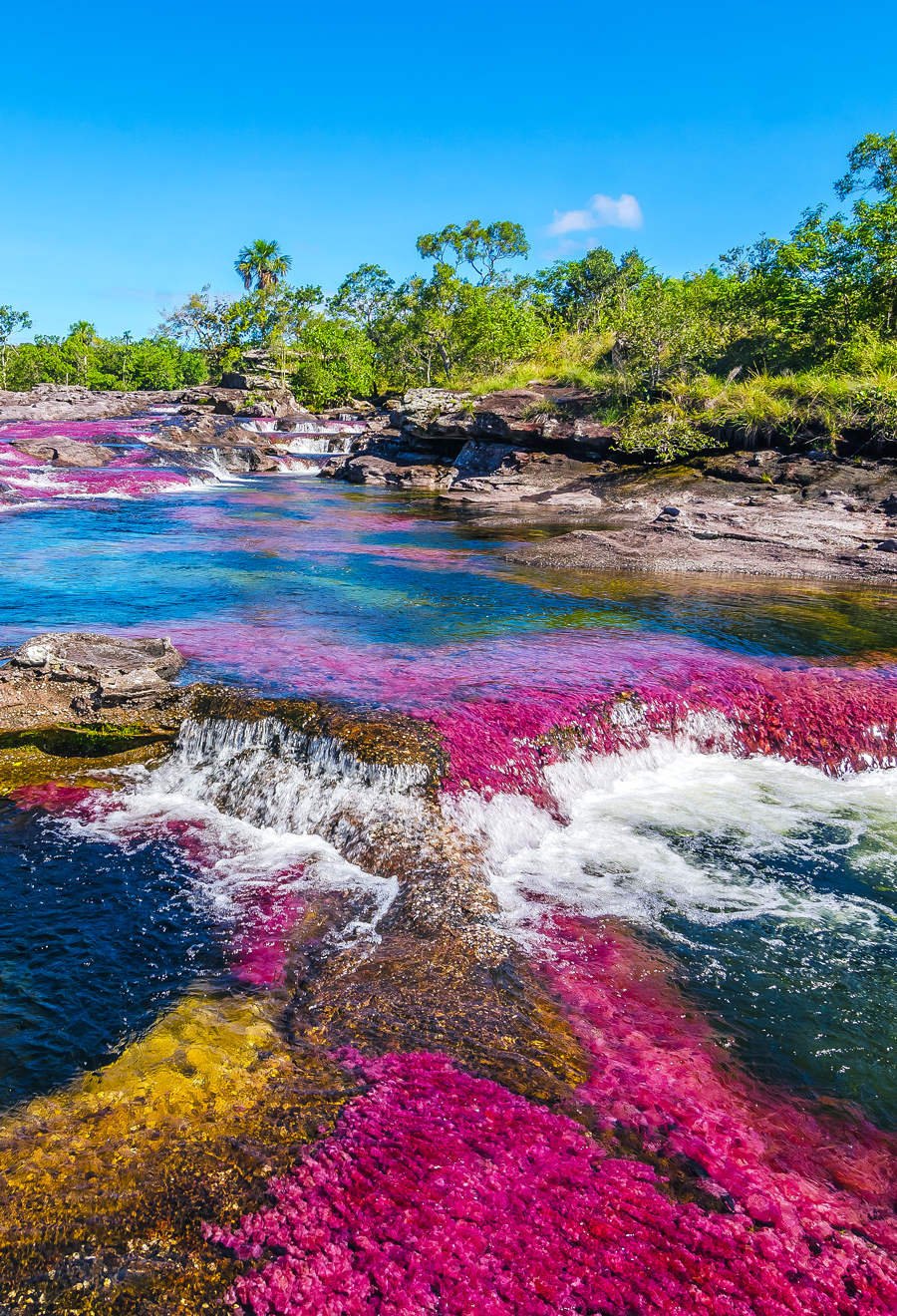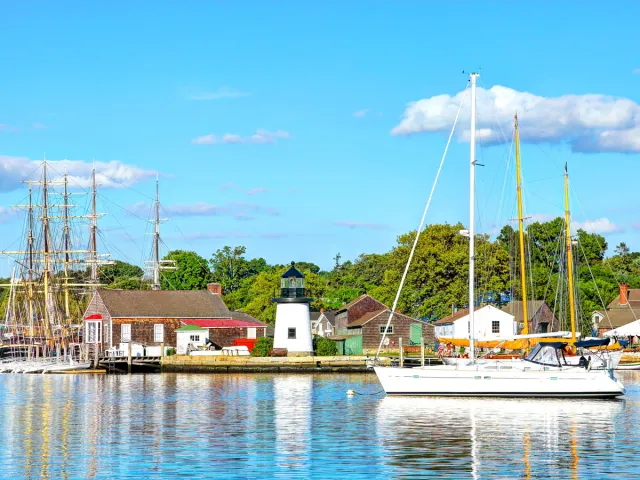For many travelers, summer is the most anticipated season of the year. It’s a time associated with warmer weather, outdoor activities, and epic vacations. And, luckily, it’s also when Mother Nature adds an extra magic touch to the natural world. From magnificent lavender blooms to a spotted lake and a rainbow river, these are seven natural wonders you can only see in summer.
Brown Bear Feeding at Brooks Falls – Katmai National Park, Alaska
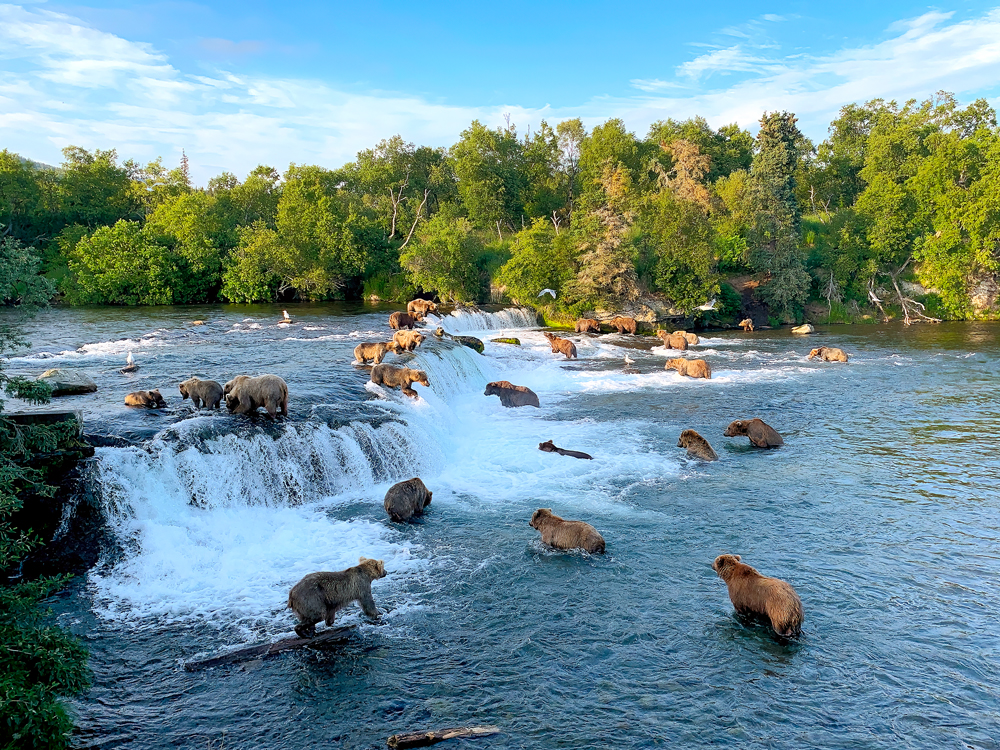
Around 2,200 brown bears roam amid a landscape of volcanoes, mountains, and coastal forests in southern Alaska’s Katmai National Park and Preserve. As the harsh winter comes to end, the bears come out of hibernation and make their way toward Brooks Camp. Once there, they travel up Brooks River to Brooks Falls, where they feed on the hundreds of sockeye salmon attempting to leap over the falls.
Visitors can often catch a glimpse of the feeding bears from June to September. Not only do they fish for salmon, but they also teach their cubs how to hunt and survive in the wild. During the feeding season, there are daily bus tours to Brooks Camp, where you can find observation decks, ranger-led programs, hiking opportunities, and camping.
Blooming Lavender Fields – Provence, France
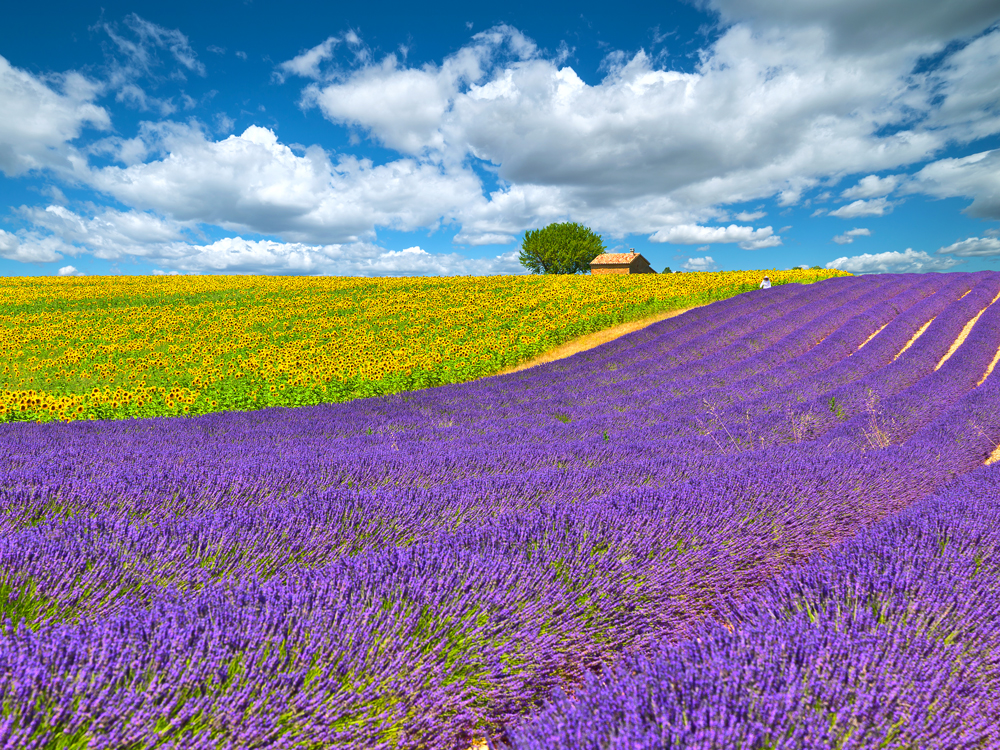
Between June and August every year, the countryside of the Provence region in the South of France turns into a mesmerizing patchwork of purple. Millions of lavender flowers bloom as far as the eye can see, creating scenes that have inspired artists such as Picasso and Van Gogh. The Valensole Plateau is perhaps the most famous location to enjoy the spectacle. It’s known for the rolling fields along the Route de Manosque and farms like Terraroma, where lavender oils and lavender-infused skin care products are made. The 2.5-mile-long Chemin des Lavandes (Lavender Path) in Sault is also worth checking out. Interpretive panels along the trail provide information about the botanical properties, cultivation, harvest, and distillation of the region’s most famous flower.
Caño Cristales – Sierra de la Macarena National Natural Park, Colombia
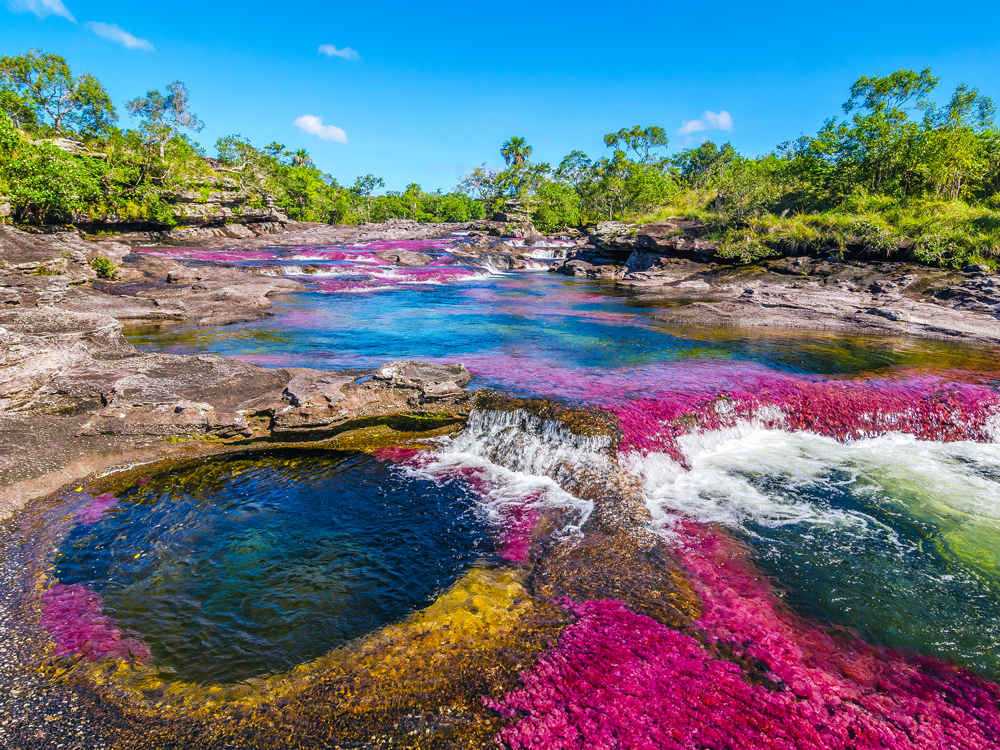
As the age-old saying goes, there’s always a pot of gold at the end of a rainbow. If you travel to Colombia’s remote Sierra de la Macarena National Natural Park, however, you might find it at the end of a river. That’s because beneath the crystalline surface of the Caño Cristales river, the water flows in fascinating hues of blue, black, green, red, and yellow. Some call it the “River of Five Colors,” while others have deemed it the “Liquid Rainbow.” Either way, this summertime phenonmenon is attributed to an aquatic plant called macarenia clavigera. It clings to quartzite rocks and turns red during the rainy season. The rainbow effect changes according to water levels and sunlight — July to November is when the colors are at their most dramatic.
Manhattanhenge – New York, New York

Manhattanhenge is a rare summer event when the setting sun aligns perfectly with the east-west streets of Manhattan’s grid layout. The name is an homage to Stonehenge, one of the world’s most emblematic stone circles. But whereas Stonehenge was built purposely to frame the sunsets of the summer and winter solstices, Manhattanhenge is a complete accident.
On two separate occasions, typically once around Memorial Day and again in mid-July, the sun drifts down precisely between the city grid. In doing so, it casts a dazzling and mystical glow over New York’s skyline. Optimal viewing spots are as far east as you can go (without losing sight of New Jersey to the west) along the wider thoroughfares of 14th, 23rd, 34th, 42nd, and 57th Streets.
Midnight Sun – Northern Norway

At the northern reaches of the planet above the Arctic Circle, the sun stays up 24 hours a day for several weeks (or even months) around the summer solstice. Known as the midnight sun, it happens because Earth’s axis is tilted more toward the sun during this time of year.
In northern Norway, summer days filled with sunlight are part of the fabric of daily life. Rather than battle to block out the light, locals instead choose to embrace the extra-long days. A midnight cable car ride to Storsteinen mountain, sunlit nighttime cruises along Trollfjord, and late-night swimming at Kvalvika Beach are all the norm. The Svalbard archipelago experiences even more round-the-clock daylight from mid-April to late August. Here, the aptly named Longyearbyen is the gateway to Arctic adventures beneath constantly sunny skies.
Puffin Migration – Vestmannaeyjar, Iceland
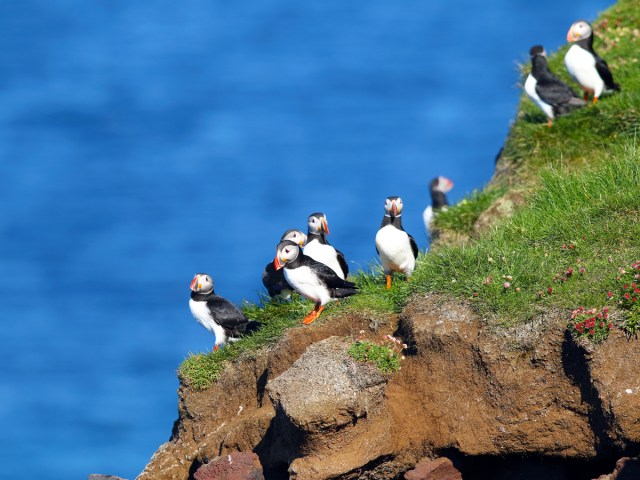
Iceland is home to approximately 60% of the world’s Atlantic puffin population, which amounts to between 8 million and 10 million individual birds. While they spend up to eight months out at sea, the puffins come ashore to breed in the summer months. One place where this happens is the Vestmannaeyjar (Westman Islands), an archipelago off the country’s southern coastline.
Between June and September, it welcomes about a fifth of the world’s puffins. The reason for this is that puffins only nest in their birthplace and where other puffins are present. Consequently, this guarantees sightings year in, year out. Taking a boat tour from Heimaey (Home Island) is a great way to spot them perched on the grassy cliffs. On Heimaey, kids and adults alike take part in pysja (puffin) patrols to rescue any wayward chicks.
Spotted Lake – Osoyoos, Canada
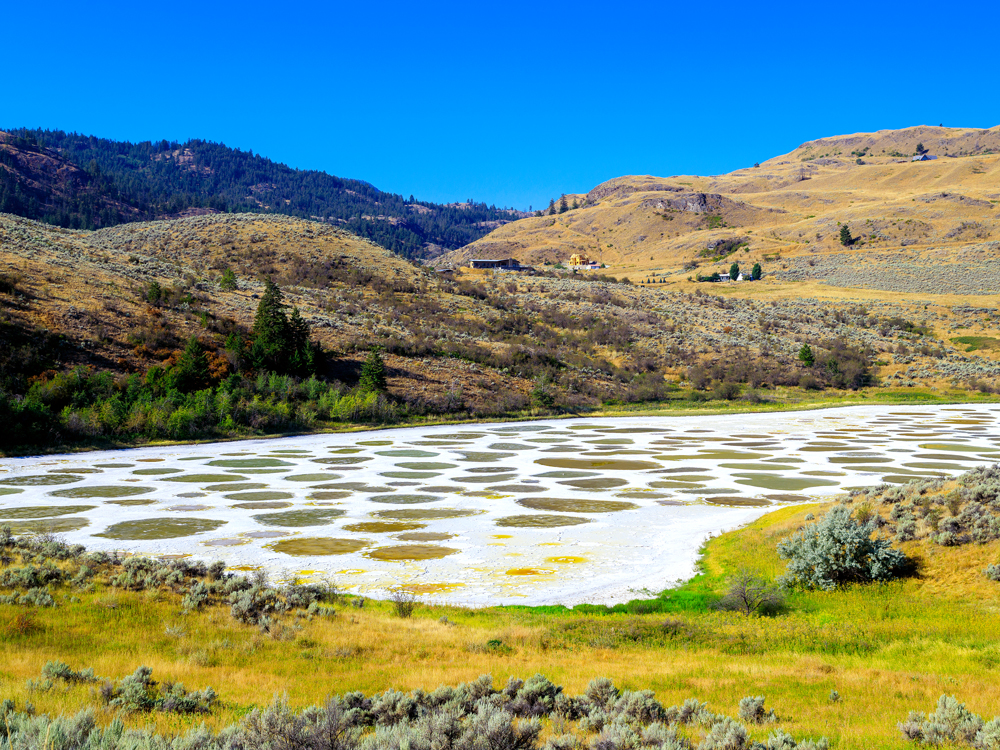
If you happen to drive along British Columbia’s Crowsnest Highway toward Osoyoos between autumn and spring, there’ll be nothing remarkable to note about Spotted Lake. But come summertime (June to August), the scene changes completely. As the temperatures rise, the lake’s water slowly evaporates to reveal a bed of circles in striking shades of blue, green, and yellow.
The circles are deposits of calcium, magnesium sulfate, sodium sulfate, and other minerals. They reach the lake via the snowmelt and runoff that drain into the lake from the nearby hills. Continued evaporation causes additional changes in shape and color. Spotted Lake is deemed a sacred place of healing by the Okanagan First Nations peoples, who call it kłlilx’w. Information about the lake and its history is on display at Osoyoos Visitor Centre.
More from our network
Daily Passport is part of Inbox Studio, which publishes content that uplifts, informs, and inspires.






